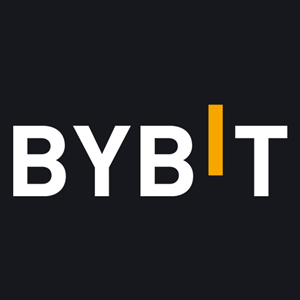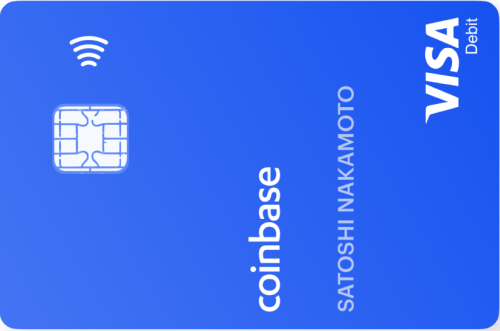The Ultimate Guide to Bitcoin: History, Price Action, Mining and the Halving November, 2024
Explore Bitcoin's journey from inception to global phenomenon, including its price history, mining process, and the impact of halving events.
 Written by Nikolas Sargeant
Written by Nikolas Sargeant
| 手数料 | 入金方法 | |||||||||
|---|---|---|---|---|---|---|---|---|---|---|
| 名前 | 仮想通貨 | テイカー | メーカー | 出金 | 電信送金 | クレジット | 米国受入可 | アクティブ開始日 | Offer | |

Bybit
Contract Trading Exchanges
|
182 | 0.06% | 0.01% | 0.0005 | 2018 |
最大600ドルの特典をGET
|
訪問 | |||

PrimeXBT
Contract Trading Exchanges
|
34 | 0.01% | 0.02% | 0.0005 | 2018 |
GET 35% DEPOSIT BONUS
|
訪問 | |||

Binance
Centralized Exchanges
|
431 | 0.10% | 0.10% | 0.0002 | 2017 |
最大100ドルのウェルカムボーナスをGET
|
訪問 | |||

Zoomex
Centralized Exchanges
|
9 | 0.60% | 0.20% | 10 USD | 2021 |
KYC-FREE, $45,115 AVAILABLE IN REWARDS & 20% FEES OFF
|
訪問 | |||

Bitget
Contract Trading Exchanges
|
297 | 0.10% | 0.10% | 0.0005 | 2018 |
低い取引手数料でスポット取引!
|
訪問 | |||
| 特徴 | ファンディング方法 | |||||||||
|---|---|---|---|---|---|---|---|---|---|---|
| 名前 | 仮想通貨 | カードの種類 | 支払手数料 | キャッシュバック | 電信送金 | クレジット | Paypal | 米国受入可 | Offer | |
| 117 | 2.69% | 4.00% |
SPEND CRYPTO ANYWHERE!
|
訪問 | ||||||
| 1 | 0 |
|
||||||||
| 特徴 | 機能性 | |||||||||
|---|---|---|---|---|---|---|---|---|---|---|
| 名前 | 仮想通貨 | セキュリティ | 匿名性 | 使いやすさ | 売買 | バウチャーとギフトカード | デビットカード | プラットフォーム | ユーザースコア | |
| 4 |
|
|||||||||
| 1 |
|
|||||||||
| 1 |
|
|||||||||
| 1 |
|
|||||||||
Bitcoin's Journey: From Zero to Billions
- 2009: Bitcoin debuts, initially valued at $0. Early adopters mine for BTC tokens.
- 2013: BTC reaches $100, marking significant growth.
- 2021: Peak price of $68,789.63 achieved following the second halving.
- Volatility: Major dips experienced, including 50% drops in 2018 and 2022.
- 2024: Bitcoin reached its all-time high of $75,830.
- Future: Price direction is uncertain, but long-term holders have seen substantial returns.
To fully understand Bitcoin, we must also cover at the role of cryptocurrencies and their brief history. Cryptocurrencies are digital currencies secured by cryptography, making them nearly impossible to counterfeit. They operate on decentralized systems using blockchain technology, which serves as a public ledger of encrypted, anonymous transactions maintained by a global network of users.
While Bitcoin is not the first digital currency or blockchain implementation, it is considered the first modern cryptocurrency. It uniquely combines cryptography, blockchain, and public key security into a single system, setting the standard for subsequent cryptocurrencies.
Satoshi Nakamoto and the Birth of Bitcoin
In August 2008, the domain bitcoin.org was registered, becoming the primary website for what would become the world's leading cryptocurrency. Later that year, on October 31, an enigmatic figure known as Satoshi Nakamoto published "Bitcoin: A Peer-to-Peer Electronic Cash System," a paper now revered in cryptocurrency circles as "Satoshi's whitepaper."

This seminal document introduced blockchain technology, a cryptographically secure system, and outlined Bitcoin as a theoretical, open-source digital asset. The term "open-source" implied that Bitcoin would be ownerless, with its use and development open to all.
Satoshi Nakamoto's true identity remains one of the greatest mysteries in the tech world. Despite numerous theories and speculation, the person or group behind this pseudonym has never been conclusively identified, and may forever remain anonymous.
Bitcoin Core Concepts
In order to answer the question “what is Bitcoin?”, it’s worth understanding BTC’s core principles and what it was designed to do. To give a solid overview of that, we’ve put together a brief list of what we see as the core concepts of Bitcoin. Let’s take a look:
- Block — A group of Bitcoin transactions verified by miners over a specific period. Miners receive newly created BTC as a reward.
- Bitcoin units — Bitcoin is divisible to eight decimal places. 1 millibitcoin (mBTC) = 1/1,000th Bitcoin — 1 satoshi (sat) = 1/100,000,000th Bitcoin.
- Transaction — A digital instruction stating "payer X sends Y Bitcoin to receiver Z."
- Blockchain — A transparent, public ledger of all transactions. Each block links to previous ones, forming an unbroken chain.
- Mining — The process of performing complex computations to create new blocks and maintain the blockchain.
- Block hash — A record-keeping service that ensures blockchain consistency and completeness. Hashes validate available Bitcoin and provide uniform mining rewards.
- Blockchain address — A 25-34 character alphanumeric sequence for receiving Bitcoin. Addresses provide anonymity by concealing personal information.
- Wallet — A digital collection of credentials facilitating Bitcoin transactions.
- Full clients — Contains a complete blockchain copy. Safest storage but requires significant space.
- Lightweight clients — Holds partial blockchain. Portable but relies on full wallet intermediaries for verification.
- Keys —Private credentials stored in a wallet.
- Public keys — Used to encrypt and decrypt transactions. Enables uninterrupted blockchain.
- Private keys — Personal passcode for spending Bitcoin. Must be kept secure to prevent theft.
Interesting Facts:
- Approximately 20% of Bitcoins are lost due to misplaced private keys.
- In 2023, cryptocurrency investors lost $1.7 billion to hackers.
Bitcoin Price Action Over the Years
Bitcoin's price action over the years reflects a journey marked by extreme volatility, rapid growth, and pivotal market events that have shaped the cryptocurrency landscape. Let’s take a look at the various stages since Bitcoin hit the scene.
Cryptocurrency's First Steps: Bitcoin's Formative Years (2009-2012)
Bitcoin's early years were characterized by slow adoption and minimal infrastructure. Initially, only a handful of tech enthusiasts engaged with the cryptocurrency, leading Alex Preda, a professor at King's Business School in London, to describe it as "a fringe phenomenon confined to a subculture of software engineering." The first real-world Bitcoin transaction occurred in May 2010 when Laszlo Hanyecz famously purchased two pizzas for 10,000 BTC, each Bitcoin worth a mere $0.0041 at the time. Bitcoin's value remained below $1 until February 2011, after which it experienced a dramatic surge, increasing 30-fold by June 2011 to reach INR 2,471. However, this spike was short-lived, and the price soon dropped to INR 411.

The cryptocurrency landscape evolved in late 2011 with the introduction of Litecoin (LTC), Bitcoin's first major competitor, leading to a 90% market drawdown that tested early adopters' resolve. Despite these challenges, Bitcoin persevered through its formative years. The year 2012 was relatively quiet, with BTC closing at around INR 1,070. This period laid the crucial groundwork for Bitcoin's future growth and the broader cryptocurrency ecosystem, setting the stage for the digital currency revolution that would unfold in the years to come.
The Rollercoaster Years: Bitcoin's Wild Ride (2013-2017)
Bitcoin's journey from 2013 to 2017 was marked by dramatic highs and lows. Starting at $13 in 2013, it skyrocketed to over $1,000 by November, driven by increased accessibility through exchanges like Mt. Gox. However, this success was short-lived. In 2014, Mt. Gox experienced a devastating security breach, with hackers stealing $60 million. The exchange's subsequent shutdown due to insolvency caused Bitcoin to plummet to around $300 by year-end, severely damaging investor trust in the cryptocurrency. The following two years saw Bitcoin trudging along with muted price action. As Alex Faliushin, CEO of CoinLoan.io, noted, "The Mt. Gox case generally demolished investor trust in BTC, and it affected the sentiment toward crypto on a much broader scale."
Despite this setback, Bitcoin managed to close 2016 at around $1,000, setting the stage for its next big move. 2017 proved to be a watershed year for Bitcoin. Fueled by increasing media coverage and growing retail investor interest, the cryptocurrency broke through several price barriers. It started the year at $1,000, reached $2,000 in May, and doubled to $4,000 by August. The introduction of Bitcoin futures contracts on the CME legitimized it as a financial asset class, sparking a "fear of missing out" among investors. This frenzy culminated in Bitcoin reaching nearly $19,000 in December 2017, a peak that would take almost three years to surpass.
Phoenix Rising: Bitcoin's Resurgence (2018-2021)
Bitcoin's journey from 2018 to 2021 was marked by resilience and rebirth. After facing a harsh downtrend in 2018 and ending the year below $4,000, Bitcoin remained stagnant through 2019, closing at around $7,000. Many dismissed it as a passing fad, seemingly unable to establish itself in the mainstream market. The Covid-19 pandemic initially seemed like Bitcoin's death knell, as it shed 50% of its value in mid-March 2020, trading below $4,000.

However, this crisis became the catalyst for an unprecedented rally. The Federal Reserve's aggressive monetary policy response, involving substantial money printing for fiscal stimulus, ignited a surge in asset prices. Bitcoin rebounded from its March low to hit $10,000 by May 2020. The true bull run began in late 2020, with Bitcoin shattering previous highs, reaching $29,000 by year's end. Momentum continued into 2021, driven by retail investors and monetary expansion, with Bitcoin hitting $40,000 in January, $50,000 in February, and nearly $69,000 in November, cementing its status as a formidable asset class.
Bitcoin's Roller Coaster: From Bust to Boom (2022-2023)
2022 saw a crypto winter, with Bitcoin falling from $39,000 to $20,000 by mid-June, triggered by rising interest rates and the TerraUSD collapse. 2023 brought recovery, with BTC rising from $16,000 in January to $42,809 by December 20, despite global economic challenges. The market stabilized in the latter half of 2023, with BTC reaching $30,500 in July and maintaining stability from October.
Bitcoin's New Heights: A Year of Milestones (2024)
2024 marked significant developments for Bitcoin. The SEC approved Spot Bitcoin ETFs in January and Ether ETFs in May. Bitcoin halving occurred on April 20. BTC set a new record of $73,750 on March 14, with a $1.44 trillion market cap. Despite subsequent corrections, BTC traded at $57,497 as of July 9, with a $1.13 trillion market cap. Spot Bitcoin ETFs saw $300 million in net inflows on July 8, indicating continued investor interest despite market fluctuations.

Bitcoin Halving: The Quadrennial Event Shaping Cryptocurrency Scarcity and Value
Bitcoin halving is a programmed event occurring approximately every four years, where the reward for mining new bitcoins is cut in half. This process, embedded in Bitcoin's protocol by its creator Satoshi Nakamoto, serves to control the cryptocurrency's supply and increase its scarcity.
Initially, 50 bitcoins were mined every 10 minutes. This amount has been halved twice, standing at 6.25 bitcoins as of 2020. The next halving, scheduled for April 2024, will reduce this to 3.125 bitcoins. This pattern will continue until all 21 million bitcoins are mined, estimated to occur around 2140.
The halving impacts Bitcoin's economy in several ways:
- It reduces the rate at which new bitcoins enter circulation.
- It increases Bitcoin's scarcity, potentially influencing its value.
- It affects miners' rewards, altering the mining ecosystem.

Historically, halvings have preceded periods of increased Bitcoin demand and value, though past performance doesn't guarantee future results. The event is significant for its role in maintaining Bitcoin's predetermined supply cap and its potential influence on the cryptocurrency's market dynamics.
How to Mine Bitcoin: A Beginner's Guide
Bitcoin mining can be an overly complex subject, especially for beginners, so let’s keep it as simple as possible. Bitcoin utilizes the Proof of Work (PoW) consensus mechanism to secure its network, validate transactions, and create new blocks on the blockchain.
What is Bitcoin Mining?
Bitcoin mining is the process where participants solve complex mathematical puzzles. This ensures the security and operation of the blockchain while introducing new Bitcoins into circulation. Mining requires specialized hardware, software, and a significant amount of electricity. Most Bitcoin mining occurs in the US.
The Evolution of Mining Hardware
Initially, miners used standard computer CPUs to mine Bitcoin. However, as the network grew, the difficulty of the mining puzzles increased, necessitating more powerful hardware. Today, miners use Application-Specific Integrated Circuits (ASICs), which offer tremendous processing power and efficiency compared to general-purpose hardware.

The Mining Process
- Transaction Gathering: Miners collect recent transactions into a block.
- Hash Function Application: Miners apply a cryptographic hash function to the block’s data.
- Meeting the Difficulty Target: The goal is to find a hash that meets the network’s current difficulty target. This difficulty adjusts approximately every two weeks to maintain a ten-minute block discovery time, stabilizing the block creation rate regardless of total network hashing power.
Finding the Correct Hash
Finding the correct hash is a matter of trial and error. Miners guess multiple nonce values (random pieces of data added to the block’s header) until they find one that produces a hash within the target range. This process is highly competitive and resource-intensive.
Rewards for Mining
The first miner to find a valid hash is rewarded with newly minted bitcoins (the block reward) and transaction fees from the transactions included in the new block. This incentivizes miners to continue securing and maintaining the Bitcoin network.
Author

Nik is a content and public relations specialist with an ever-growing interest in Crypto. He has been published on several leading Crypto and blockchain based news sites. He is currently based in Spain, but hails from the Pacific Northwest in the US.
| 手数料 | 入金方法 | |||||||||
|---|---|---|---|---|---|---|---|---|---|---|
| 名前 | 仮想通貨 | テイカー | メーカー | 出金 | 電信送金 | クレジット | 米国受入可 | アクティブ開始日 | Offer | |

Bybit
Contract Trading Exchanges
|
182 | 0.06% | 0.01% | 0.0005 | 2018 |
最大600ドルの特典をGET
|
訪問 | |||

PrimeXBT
Contract Trading Exchanges
|
34 | 0.01% | 0.02% | 0.0005 | 2018 |
GET 35% DEPOSIT BONUS
|
訪問 | |||

Binance
Centralized Exchanges
|
431 | 0.10% | 0.10% | 0.0002 | 2017 |
最大100ドルのウェルカムボーナスをGET
|
訪問 | |||

Zoomex
Centralized Exchanges
|
9 | 0.60% | 0.20% | 10 USD | 2021 |
KYC-FREE, $45,115 AVAILABLE IN REWARDS & 20% FEES OFF
|
訪問 | |||

Bitget
Contract Trading Exchanges
|
297 | 0.10% | 0.10% | 0.0005 | 2018 |
低い取引手数料でスポット取引!
|
訪問 | |||
| 特徴 | ファンディング方法 | |||||||||
|---|---|---|---|---|---|---|---|---|---|---|
| 名前 | 仮想通貨 | カードの種類 | 支払手数料 | キャッシュバック | 電信送金 | クレジット | Paypal | 米国受入可 | Offer | |
| 117 | 2.69% | 4.00% |
SPEND CRYPTO ANYWHERE!
|
訪問 | ||||||
| 1 | 0 |
|
||||||||
| 特徴 | 機能性 | |||||||||
|---|---|---|---|---|---|---|---|---|---|---|
| 名前 | 仮想通貨 | セキュリティ | 匿名性 | 使いやすさ | 売買 | バウチャーとギフトカード | デビットカード | プラットフォーム | ユーザースコア | |
| 4 |
|
|||||||||
| 1 |
|
|||||||||
| 1 |
|
|||||||||
| 1 |
|
|||||||||






